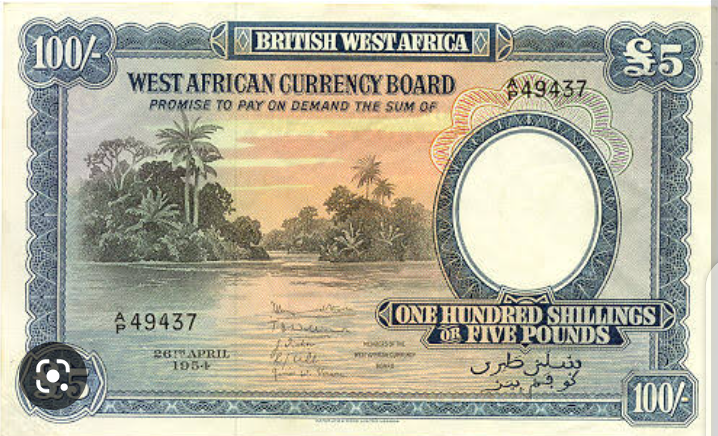14 Times Nigeria Redesigned Banknotes In The Past (pics)
On October 26, 2022, Godwin Emefiele, Governor of the Central Bank of Nigeria (CBN), announced that the country’s apex bank would be redesigning the N200, N500 and N1,000 notes.
Emefiele said the move became imperative because the country needed to improve on its currencies’ security and features, mitigate counterfeiting, preserve the collective national heritage, control the banknotes in circulation and reduce the overall cost of currency management.
It also stressed that the exercise was long overdue as international best practice required central banks all around the world to redesign banknotes every five to eight years.
The CBN also noted that the new banknotes would start circulating from December 15, 2022, and that the old notes would cease to have value on January 31, 2023.
The Newly Redesigned Currencies
However, since deposition began, Nigerians have continued to encounter challenges in their bid to have access to funds.
Nigeria’s cash-dependent informal economy and ordinary citizens have had to scramble for the new notes and this has led to violent protests in some parts of the country.
After several “conceited” statements by the CBN governor, the apex bank eventually decided to extend the deadline to February 10.
On Friday, Muhammadu Buhari, President of Nigeria, asked the entire nation to give him seven days to find a lasting solution to the cash shortage crisis.
Before the last, Nigeria had made changes to its banknotes 14 times since gaining independence in 1960, and none of the changes was this controversial and inconveniencing. Here is the story:
Until 1958, the West African Pound, a currency used by a group of British colonies, protectorates and mandate territories, served as Nigeria’s legal tender.
In 1959, Nigeria changed the name on its banknotes to the ‘Nigerian Pound’. Despite this change, the fact that the notes still bore the name ‘Federation of Nigeria’ meant the country was still under the British rule.
After it gained independence however, the inscription ‘Federation of Nigeria’ was replaced in 1962 with ‘Federal Republic of Nigeria’ on the notes.
In 1973, Nigeria changed its currency name from pound, shillings and pence to naira and kobo. With the change, a naira at the time was equal to 10 shillings, while 100 kobo became one naira.
This era brought an end to the pound being used as the dominant legal tender in the country.
1977

N20 Banknote Before the Polymer Era
On February 11, 1977, the N20 note was introduced by the then military head of state, Murtala Muhammed. The new currency immediately became Nigeria’s highest denomination and its emergence also coincided with the period the country experienced economic growth.
The preference for cash transactions and the need to conveniently move around with cash made the introduction of N20 a highly welcome development among Nigerians.
1979

N1 banknote Before Conversion to Coin
In 1979, three new banknotes – one naira, five naira and 10 naira – were introduced to Nigerians. In order to facilitate identification, distinctive colours were used for the various denominations.

N5 banknote before polymer redesign

N10 banknote before polymer redesign
The notes bore the portraits of three eminent Nigerians, who were declared national heroes on October 1, 1978. The one naira note had the portrait of Herbert Macaulay, a Nigerian nationalist. On the five naira note was Tafawa Balewa, Nigeria’s Prime Minister during the independence era, and on 10 naira was Alvan Ikoku, a foremost Nigerian educationist.
1984
All the colours of the banknotes were changed except for the 50 kobo note. According to the then government, the redesign became necessary in order to control the trafficking of the naira to foreign countries.
Muhammadu Buhari, Nigeria’s current president, was the country’s military head of state at the time.
1991

N50 ‘Better Life’ banknote before polymer redesign
During the Ibrahim Babangida-led government in 1991, the N50 naira note, popularly known as ‘Better Life’ among Nigerians, was introduced. The banknote had the portraits of four ordinary Nigerians who represented various ethnic groups and cultures.
During the same period, N1 and 50 kobo notes were changed to coins.
THE INTRODUCTION OF N100, N200, N500 AND N1000 NOTES
In response to the expansion in economic activities and to facilitate an efficient payment system, the N100, N200, N500 and N1000 banknotes were introduced in December 1999, November 2000, April 2001 and October 2005 respectively.
The N100 had the portrait of Obafemi Awolowo, a foremost journalist and Nigerian statesman and the N200 had a portrait of Ahmadu Bello, another statesman who was once the premier of northern Nigeria. The N500 carried the picture of Nnamdi Azikiwe, Nigeria’s first president, while on the N1,000 note were Aliyu Mai-Bornu, Nigeria’s first indigenous CBN governor, and Clement Isong, his (Mai-Bornu’s) successor.
The new notes were introduced during the government of Olusegun Obasanjo, Nigeria’s president between 1999 and 2007.
N20 POLYMER BANKNOTE AND KOBO REDESIGN IN 2007
As part of the economic reforms, the N20 polymer banknote was injected into the Nigerian economy on February 28, 2007. During the same period, the N1 and 50 kobo coins were also reissued in new designs.
Following a perceived successful performance of the N20 by the government, the N5, N10 and N50 were also converted to polymer banknotes on September 30, 2009.
With this, Nigeria’s banknotes that were popularly regarded as lower denominations attained polymer forms.
SPECIAL REDESIGN OF N50 TO CELEBRATE 50 YEARS OF INDEPENDENCE

50th Independence Anniversary N50
As part of the CBN’s contribution towards the celebration of Nigeria’s 50th independence anniversary, a commemorative N50 polymer note was produced on September 29, 2010.
SPECIAL REDESIGN OF N100 TO CELEBRATE N100 YEARS OF AMALGAMATION

N100 Printed During Centenary Celebration
Just like in 2010, the apex bank also redesigned the N100 note to celebrate the 100th anniversary of the amalgamation of the northern and southern protectorates in 1914. The special notes were printed on December 19, 2014. Continue reading
Fij.ng













Add Comment